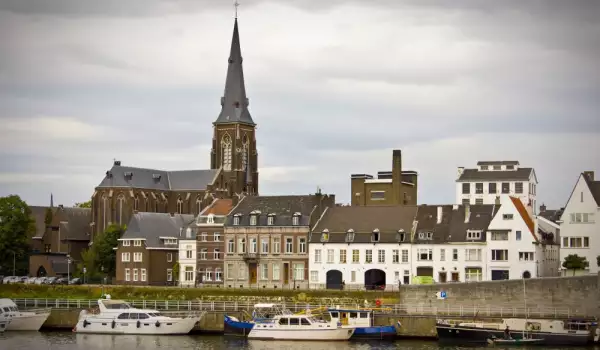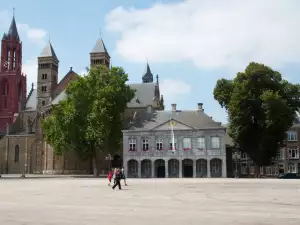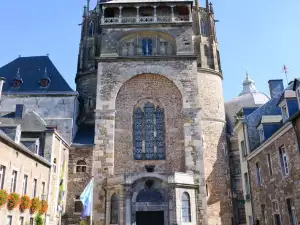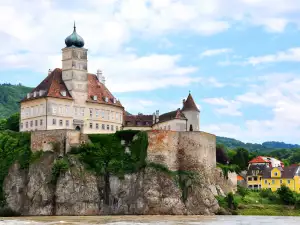Maastricht

Maastricht is a city located in the Dutch province of Limburg. Maastricht is the administrative center of the province of Limburg. The city has a population of over 120, 000 people. Maastricht is located three kilometers from the border with Belgium. Maastricht is known as a popular tourist destination.
Maastricht is recognized as the oldest city in Holland. It was founded in 50th BC by the Romans. Its name comes from the Latin words Mosae Trajectum, which means ford over the river Meuse. This is due to the bridge built by the Romans on the river during the reign of Emperor Augustus Caesar. It is believed that Maastricht was the first settlement in the Netherlands, which had received Roman citizenship rights.
In 382, holy Bishop Saint Servatius, who is patron of the city of Maastricht built his residence here. He was the first bishop of the city of Maastricht.
The city along the river has several waterways. The city keeps many historical monuments. Among them was the courthouse built in 1475 and the ruins of protective equipment and monumental medieval gates that were erected in 1229. These gates were known as the Gates of Hell (Helpoort).

Among the temples in the city, most impressive is the Basilica of St. Servatsi, built in 1000, which is considered the oldest basilica in the country. It is famous for its golden casket for keeping relics, and the largest bell in the whole of Holland. Another church is the church of St John, which is distinguished by its 75-meter tower. In 1976 the city was home of the University of Maastricht, which is the youngest university in the Netherlands.
There is located the Art Museum Bonnefantenmuseum. There are collected contemporary art exhibitions, as well as Dutch and Italian art from the thirteenth and fourteenth centuries.
South of Maastricht in ancient times was extracted marl - a special type of carbonate rock composition. During the wars in over three hundred kilometers long tunnels refugees were hiding. Works of art and food stocks were also stored by vandals there. Today tourists can visit some of these historic tunnels.
Each year in February in Maastricht is held the most lavish carnival in the country, which brings a huge amount of people who go about the streets dressed in carnival costumes.
In the early Middle Ages Maastricht was part of the Carolingian Empire. At that time the city flourished. This is the time at which the Dutch poet Henric van Veldeke wrote a famous legend about St. Servatsiy, which is one of the first works of Dutch literature.
In the Middle Ages the city remains an important center for trade and production, mainly of wool and leather, although it gradually began to feel economic decline. After a short period of economic prosperity in the fifteenth century the city's economy declined because of war.
Economic recovery is felt only in the early nineteenth century. In 1579 the city was conquered by the Spanish army and Maastricht remained under the authority of the Spanish crown for fifty years. In 1632 the city was conquered by Frederick Henry, Prince of Orange.
In 1673 the city was besieged by Frenchmen during the Franco-Dutch War. In 1794 the town was part of the French Empire. In 1815 the town became part of the United Kingdom of the Netherlands. The Second World War was bad for the economy of the city. Today the city is a beautiful, highly developed industrial city and a favorite spot for recreation of tourists.







